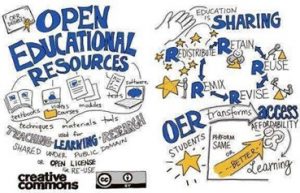1 Introduction
FALL 2022 IN-CLASS USE ONLY
[updates will be posted on BB for other semesters]
Course Description
CLDV100 (Liberal Arts) Introduction to Multicultural Studies in the 21st Century: 3 hrs. 3 crs.
A study of what culture is; how it influences the choices we make; how to deal positively with conflicts that inevitably arise in working/living situations with people of diverse cultures. It is a course structured to raise multicultural awareness and fortify students’ social skills in dealing with cultural differences. It includes an ethnographic study of cultural groups in the U.S.A. Through the study of cultural concepts, this course develops skills in critical thinking, writing, and scholarly documentation. Not open to students with credit in CLDV 101 or Core 101. Prereq: ENG 125. Coreq: ENG 125. This is a Writing Intensive course. [Flexible Core: Individual and Society].
Course Narrative
Adapted from: chapter 3 on Culture, OpenStax Sociology 3e
In everyday conversation, people in the U.S. rarely distinguish between the terms culture and society, but the terms have different meanings, and the distinction is important to a sociologist. A culture represents the values, beliefs, norms, language, symbols, and practices of a group, while society represents the people who share a culture. Neither society or culture could exist without the other.
Within the U.S., many groups of people share a community and a culture. By “community,” sociologists refer to a definable region of a society, real terra firma—as small as a neighborhood (Brooklyn, or “the east side of town”), as large as a country (Ethiopia, Nepal or the U.S.), or somewhere in between (in the U.S., this might include someone who identifies with Southern or Midwestern society).
In this course, we examine the relationship between culture and society in greater detail and pay special attention to the elements and forces that shape culture, including diversity and social changes. examples are all aspects of culture, which is comprised of shared values (ideals), beliefs which strengthen the values, norms and rules that maintain the values, language so that the values can be taught, symbols that form the language people must learn, arts and artifacts, and the people’s collective identities and memories.
Learning Goals:
Differing and multiple perspectives
- Studying (and teaching) such a vast and diverse topic as “multiculturalism” can be challenging. Because no introductory course can claim to be fully comprehensive, this course will explore several cultures, people and environments.
- Identify and engage with local, national, or global trends or ideologies, and analyze their impact on an individual or collective decision-making as they pertain to the topic of diversity and multicultural education.
- To gain a fundamental knowledge of understanding culture and teaching individuals from diverse backgrounds.
- Examination of the nature and function of culture, diversity, and multiculturalism on the development of an individual and on group cultural identity, definitions and implications of diversity, and the influences of culture on learning, development, pedagogy and our various communities.
Learning Objectives
In addition, students will demonstrate increased competencies in:
- Understanding what culture is, how it is acquired and how it shapes our values, attitudes and behaviors;
- Articulating and assessing ethical views and their underlying behaviors related to ethnocentricity and prejudices of all kinds;
- Assessing social problems from within a cultural context;
- Developing the analytical skills and knowledge that will enable us to engage constructively with ideologies and issues of cultural diversity in the local, regional and global communities;
- Working cooperatively with persons of diverse backgrounds; and
- Appreciating the contributions of our own and other cultural groups to our global community.
COIL Project Background
Collaborative Online International Learning – COIL – connects faculty, students and classes at higher education institutions around the world for discussions, exploration and collaborative project work. COIL is integrated into the curriculum of classes – in any subject area, at any level – and engages students and faculty in significant intercultural interactions through applied and project-based learning, thereby bringing international experiences and their attendant skills development into the reach of all students, at any institution. COIL sits at the intersection of many important goals of higher education: innovation, applied learning, diversity, partnerships, access and equity, and development of skills for career and life.
COIL Project Background
Collaborative Online International Learning – COIL – connects faculty, students, and classes at higher education institutions around the world for discussions, exploration, and collaborative project work. COIL is integrated into the curriculum of classes – in any subject area, at any level – and engages students and faculty in significant intercultural interactions through applied and project-based learning, thereby bringing international experiences and their attendant skills development into the reach of all students, at any institution. COIL sits at the intersection of many important goals of higher education: innovation, applied learning, diversity, partnerships, access and equity, and development of skills for career and life.
COIL provides a means to: Develop intercultural awareness and communicative competencies, cost-effectively and at scale; Encourages an appreciation for diverse backgrounds and perspectives; Broadens and strengthens students’ understanding of the discipline studied through applied projects and discussions; Advances the use of technology tools for collaboration, communication, and learning; Prepare students to work in a multi-cultural and connected world. More about COIL: https://coil.suny.edu/

Source: https://ioannouolga.blog/2017/04/28/history-of-open-education/
The definition of a zero-cost resource is that students do not incur any cost for purchasing it—rather than zero-cost to its creators or the libraries that obtain and maintain it. While the College Now students are enrolled in their courses, they can use any resource provided by the York College Library, including a large number of databases that cover academic and general-interest articles, as well as resources such as LinkedIn Learning [Source: CTLET / York College Library].
